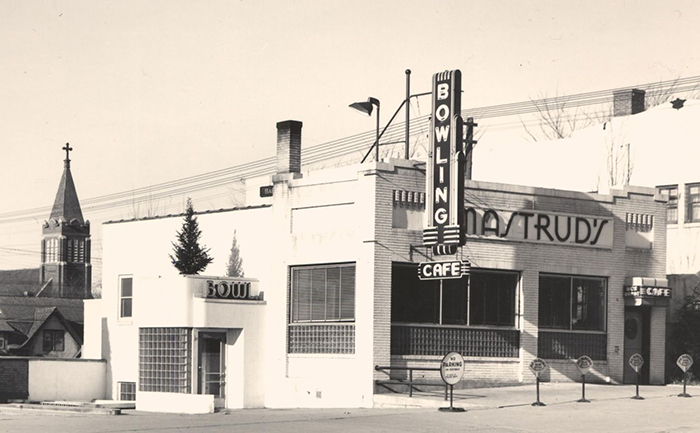County bowling alleys left lasting memories
News | Published on February 20, 2024 at 4:34pm GMT+0000 | Author: Tucker Henderson
0Mills Lanes and Lucky Strike Grill remains a popular bowling destination

Old bowling alleys such as this one near downtown Fergus Falls were popular in Otter Tail County and all across west central Minnesota, especially during the 1950s and 1960s.
By Tom Hintgen
Otter Tail County Correspondent
Bowling alleys in Otter Tail County, some no longer standing, provided great entertainment. Today, older county residents have great memories of bowling during the 1950s and 1960s.
Those were the days of pin boys who manually placed bowling pins, prior to the introduction of automatic pinsetters. Many bowling alleys were located in saloon basements and provided a place for working-class men and women to meet and socialize.
The Fergus Falls bowling alley just north of downtown had eight lanes. People would take stairs down to the bowling alley which also had seating for those watching the bowlers.
“That building was originally the bus depot. My grandfather had the bus service, above the bowling alley, which was Elliott Transportation,” said Mary Melby Christenson, a 1966 graduate of Fergus Falls High School.
The main level had the lunch bar along with the ticket and waiting area. Greyhound Bus Line used to stop there.
“This place was a hang out for school kids. And oh, those Maid Right sandwiches,” said Fergus Falls retiree Ruth Berg.
Maid Right originated in Iowa and was known for their loose meat sandwiches. They featured perfectly seasoned ground beef served on a warm, slightly sweet bun with pickles and diced onion.
“We bowled there for physical education when we were junior high students at nearby Washington School,” Christenson recalls. “This building with the bowling alley went down when the phone company expanded.”
Mark Adelsman, a 1967 graduate of Fergus Falls High School, remembers Satch the bowling instructor at the downtown lanes.
“Satch was a great guy,” said Adelsman. “I remember those days when kids were hired to place the pins by hand.”
In the 1950s, when the bowler would throw the first ball, the pin setter would pick up the bowling ball and place it on the return rail. Then, as fast as he could, the pin setter would pick up the fallen pins and place them in a rack.
Then the bowler would throw a second time, unless it was a strike on the first throw.
“Those also were the days of the smoke-filled rooms,” Adelsman recalled. “The bowling alley at the lower level of the building on North Union is something I look back on with fond memories.”
A short distance from the downtown bowling alley in Fergus Falls was Our Lady of Victory Catholic Church. Residing in the rectory next to the church was Father Robert Smith, an avid bowler.
Father Smith and a member of his congregation, Fran Conito, bowled regularly at the downtown bowling alley. Conito was widely known in Fergus Falls as a physical education teacher at grade schools throughout the community.
